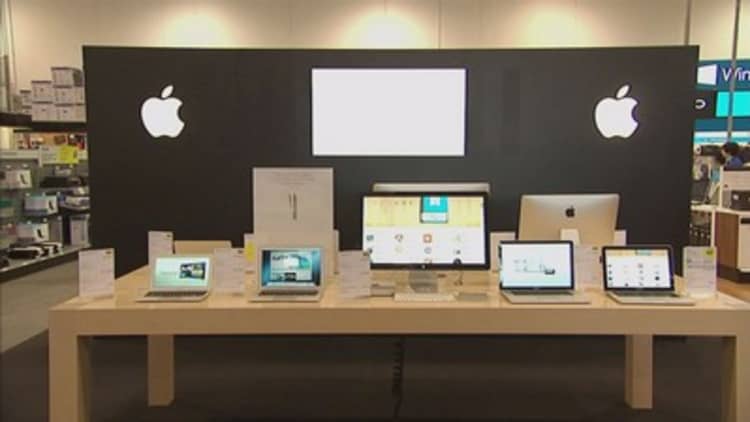
Thanks to reports from analysts with sources in Apple's supply chain, we're starting to get a idea of what to expect this September, when the company is likely to launch the iPhone 8.
Over the past few years, Apple has entered into a relatively predictable pattern of iPhone launches. Most of the time we head into September expecting a 4.7-inch iPhone and a larger 5.5-inch iPhone Plus model. Sometimes we get a one-off product like the iPhone SE. This year, though, it's starting to appear that Apple might switch things up with three different models, including a high-end iPhone with some of the most advanced tech available.
That means we should expect a regular 4.7-inch iPhone, another 5.5-inch iPhone Plus and yet another device, which has often been referred to as either the iPhone 8, the iPhone Anniversary Edition or the iPhone X. It's this device that has people talking. The iPhone 8 is said to be the largest yet, at least in terms of screen size, with a 5.8-inch panel according to Drexel Hamilton analyst Brian White.
Apple tapped Samsung to provide 70 million curved OLED panels for the most high-end iPhone 8, the Japanese financial news agency Nikkei said earlier this month. Apple hasn't adopted these sorts of displays before, though Samsung has used them in its own smartphones for many years. They're a big deal.
OLED screens are brighter and more colorful than what Apple typically includes on its iPhones, and they're often dubbed the best smartphone screens on the market by experts. These panels should allow Apple to offer a bezel-less design, with most of the front of the phone dominated by the brilliant new screen.
In March, Apple was awarded a patent for 3-D facial recognition. Paired with reports from several analysts, including JPMorgan's Rod Hall and KGI Securities' Ming-Chi Kuo, we're expecting the iPhone 8 to employ 3-D facial recognition as a means for biometric security.
A user may be able to unlock the device by looking at it, for example. Kuo also believes the 3-D sensor might enable some sort of 3-D selfie functionality or support for augmented reality, the latter of which Tim Cook has identified as a major area of interest for Apple.
Unfortunately, the advanced components may ultimately mean that consumers won't be able to buy the iPhone 8 right away. While we expect Apple to unveil the device in September, Drexel Hamilton's White suggested delays acquiring the new components may push the launch back a tad.
"Our contact strongly believes the 5.8-inch iPhone will be delayed by several weeks due to challenges around the 3-D sensing technology but still in time for the December holidays," White said in an April 7 note. The standard 4.7-inch and 5.5-inch iPhones are expected to go on sale in September, however.
While there was some speculation that Apple's iPhone 8 might cost as much as $1,000 — certainly giving some folks some early sticker shock — UBS analyst Steven Milunovich doesn't think it'll cost that much. In a recent note, Milunovich said the iPhone 8 with 64GB of storage and a new OLED panel is likely to cost around $870, in an effort to price closer to Samsung's $720 Galaxy S8.
Finally, the new iPhones are likely to run on Apple's new mobile operating system, iOS 11, which Apple will almost certainly unveil this summer. The company typically unveils its latest version of iOS during WWDC in June, and then launches it in tandem with the new iPhones in September.
We still have five months before the expected unveiling of the iPhone 8, however, so keep in mind that a lot can change.


